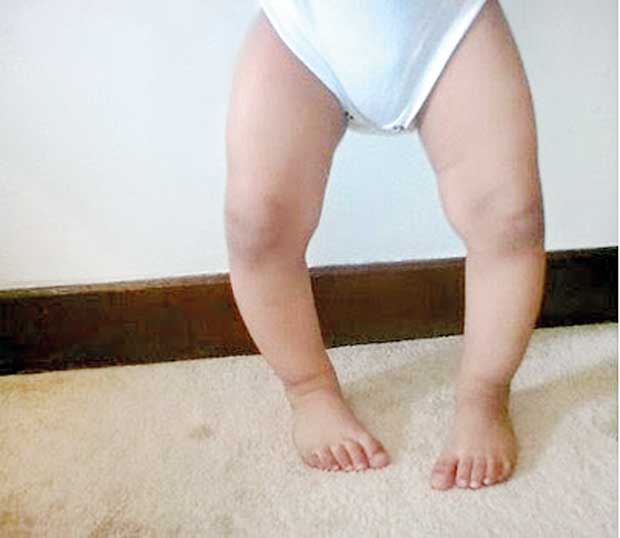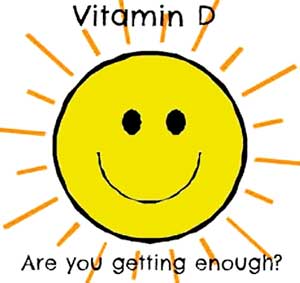Reply To:
Name - Reply Comment

 Ever wondered why your muscles feel weak? Why tasks that took very little effort are now seemingly impossible? These symptoms might mean you are suffering from severe Vitamin D deficiency.
Ever wondered why your muscles feel weak? Why tasks that took very little effort are now seemingly impossible? These symptoms might mean you are suffering from severe Vitamin D deficiency.
Vitamin D deficiency has many names including Osteomalacia and soft bones. Vitamin D deficiency is now thought to be very common among South Asians and even Sri Lankans. Vitamin D deficiency might be a key reason for all these changes.
How does it feel to have low Vitamin D levels?
The problem with Vitamin D deficiency is that the symptoms are very slight. You might tend to ignore most of them. It is not confined to the elderly and can affect people of all ages.
Muscle weakness and bone pains are key symptoms. Some patients complain of body aches. Inability to climb stairs because of weak thigh muscles and a duck-like walk because of weak hips could also indicate Vitamin D deficiency Muscle weakness tends to affect the shoulders and trunk too. Bone pain is initially felt when you apply firm pressure. Sometimes when your bones hit against an object, this could cause severe pain. There could be partial fractures of bones which are termed pseudo fractures by doctors.
Please note that it’s not just Vitamin D deficiency that causes the above symptoms. Weakness could be due to a thyroid problem or even anaemia.

How does our body get Vitamin D?
Sunlight has ultraviolet B rays that are absorbed by your skin which manufactures Vitamin D molecules. These molecules are then converted by the liver and kidneys into active Vitamin D. About twenty percent of the Vitamin D is absorbed through the gut as well. This active ingredient is given the name 1,25 dihydroxycholecalciferol. It is very important for body calcium regulation, bone strength and muscle functioning.
What is Osteomalacia?
If Vitamin D deficiency is very severe, it can affect the absorption of calcium from the gut. If we consider the structure of any bone, it consists of a hard outer shell (the cortex) made up of minerals - mainly calcium and phosphorus - and a softer inner mesh (the matrix) made up of collagen fibers. This inner mesh is like a cobweb; interconnected but bendable. The mesh is very weak when formed but is gradually covered or coated by calcium. This process is called mineralisation. The strength of the new bone depends on the amount of mineral covering the collagen matrix. The more mineral, the stronger the bone.
Osteomalacia happens if mineralization doesn’t take place properly. In Osteomalacia, more and more bone is made up of collagen matrix without a mineral covering, so the bones become soft. These softened bones may bend and crack and this can be highly painful. There are rarer types of Osteomalacia which are sometimes seen in children.
Who gets Osteomalacia?
People who do not go out in the sun for at least 15 minutes a day could be at risk. Even covering the entire body so that sun rays cannot reach the skin might be a problem. People who have a dark complexion are also at risk.
We now emphasise on the importance of a diet rich in Vitamin D. Diets lacking in Vitamin D might be a major risk factor. Dairy products and oily fish are good dietary sources of Vitamin D.
There are of course rarer causes of Osetomalacia. If one has severe kidney or liver disease, this prevents Vitamin D from becoming activated. Diseases of the gut which prevent the proper absorption of Vitamin D like inflammatory bowel disease can cause Osteomalacia as well.
How is Vitamin D deficiency diagnosed and treated?
There is a blood test which detects Vitamin D levels. Although this is the most accurate way of diagnosing the condition, it is expensive. We mainly go by the symptoms and treat patients, as it involves only vitamin supplementation.
Vitamin D is provided to patients in the form of tablets or injections.
I ask patients to modify their lifestyle while continuing the supplements. Diets rich in Vitamin D, plenty of daily sunshine (without umbrellas and sunblock!), reducing alcohol intake and regular exercise helps. The best time to go out in the sun is between 11 am and 3 pm when Vitamin D production beneath the skin is at its highest. Many people are unnecessarily worried about tanning and skin cancer. The incidence of skin cancer caused by sunlight is exceedingly rare among Sri Lankans thanks to melanin.